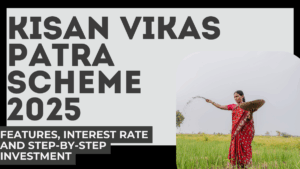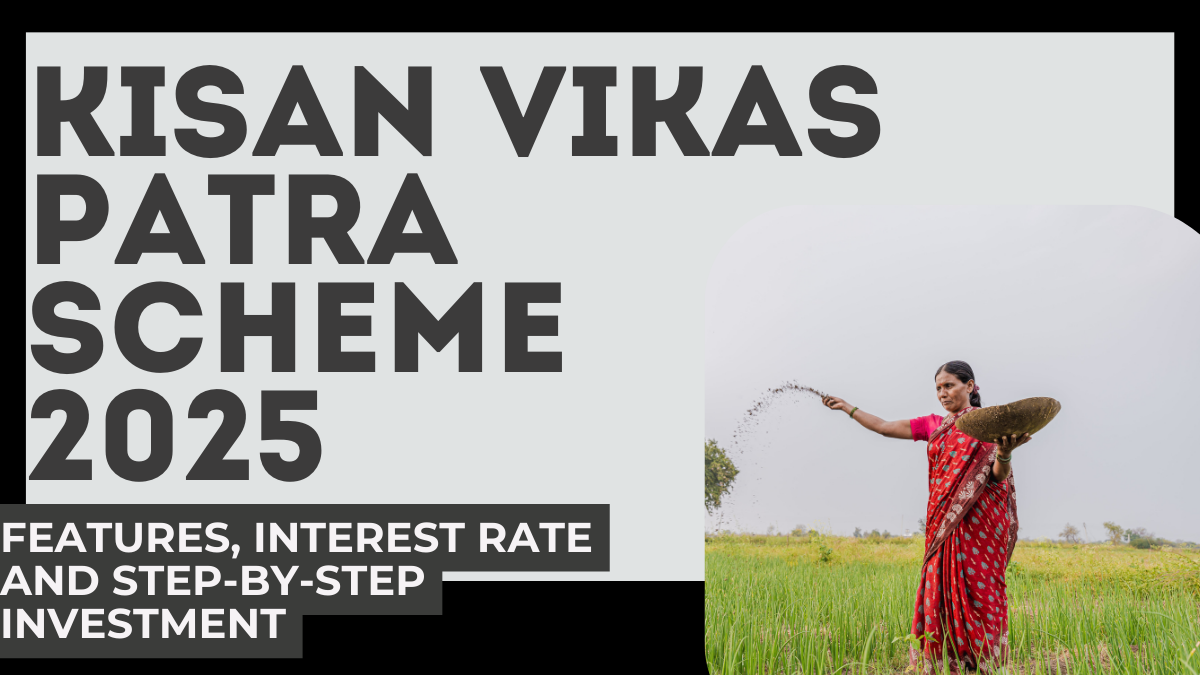The Kisan Vikas Patra (KVP) Scheme is one of India’s most trusted savings instruments, designed to encourage long-term financial discipline among small and middle-income investors. Operated through post offices, this government-backed scheme guarantees returns and doubles invested money in a fixed period. In 2025, KVP continues to be a safe and attractive choice for risk-averse investors seeking stability and assured growth.

What Is Kisan Vikas Patra?
The KVP scheme was originally launched in 1988 by the Government of India to promote rural savings. Over the years, it has become popular among all sections of society due to its simple structure and guaranteed returns. Unlike volatile options such as equities or mutual funds, KVP offers fixed, government-assured payouts, making it ideal for conservative investors.
Key Features of KVP 2025
The scheme has been updated over time, but its 2025 version retains several attractive features:
-
Guaranteed Returns: Backed by the Government of India, ensuring complete safety of principal and interest.
-
Fixed Interest Rate: Around 7.5% per annum (compounded annually).
-
Doubling Period: At the current rate, investments double in approximately 115 months (9 years and 7 months).
-
Minimum Investment: ₹1,000, with no upper limit.
-
Available at Post Offices: Accessible nationwide across India’s postal network.
-
Certificates Issued: Investors receive certificates in electronic or passbook form for recordkeeping.
This structure makes KVP highly suitable for people looking for medium to long-term savings without risk exposure.
Eligibility Criteria for KVP
To invest in KVP 2025, the following conditions apply:
-
Resident Individuals: Only Indian residents can invest.
-
Minors: Accounts can be opened on behalf of minors by parents/guardians.
-
Joint Accounts: Two adults can open a joint KVP account.
-
HUFs and NRIs: Not eligible to invest in KVP.
Step-by-Step Process to Invest in KVP
Investing in KVP is simple and can be done at any post office branch:
Offline Process
-
Visit your nearest post office and request the KVP application form.
-
Fill in details such as name, address, deposit amount, and nominee.
-
Submit KYC documents (Aadhaar, PAN, proof of address).
-
Deposit the desired amount (minimum ₹1,000).
-
Collect your KVP certificate or update your passbook as proof of investment.
Online Process (If Linked to Bank/Post Office Account)
-
Log in to your post office/bank internet banking portal.
-
Navigate to Small Savings Schemes > KVP.
-
Fill in required details and choose the deposit amount.
-
Upload scanned documents (if not already verified).
-
Confirm and complete payment online.
Digital access in 2025 has made the scheme much more convenient for urban investors.
Premature Withdrawal and Loan Facility
While KVP is designed for long-term savings, limited withdrawal flexibility exists:
-
Lock-in Period: Minimum lock-in of 2.5 years. Withdrawals before this are not allowed.
-
After Lock-in: Premature closure is permitted for specific reasons such as death of account holder or court orders.
-
Loan Facility: Investors can pledge their KVP certificates to avail loans from banks, making it a useful collateral instrument.
Tax Benefits and Considerations
Unlike PPF or NSC, KVP does not offer tax deductions under Section 80C. However:
-
Interest earned is taxable.
-
TDS is applicable, but only above the specified exemption limit.
-
Despite the absence of tax benefits, KVP remains popular for its guaranteed returns.
Who Should Invest in KVP?
The KVP Scheme 2025 is ideal for:
-
Individuals seeking safe and guaranteed returns.
-
Parents planning long-term savings for children.
-
Conservative investors who do not want to risk money in stock markets.
-
Those looking for collateral for future loans.
It is not suitable for those looking for high returns or short-term liquidity.
Key Takeaways
The Kisan Vikas Patra Scheme 2025 offers secure investment with fixed returns at 7.5% per annum. Money doubles in just under 10 years, with no upper limit on deposits. While it lacks tax benefits, its guaranteed payouts make it one of the safest savings instruments available in India.
For individuals focused on security over risk, KVP remains a smart choice in 2025.
FAQs
What is the interest rate of KVP in 2025?
The current interest rate is around 7.5% per annum, compounded annually.
How long does it take for money to double in KVP?
At present rates, the investment doubles in about 115 months (9 years and 7 months).
Can NRIs invest in KVP?
No, only resident individuals are eligible to invest in KVP.
Is premature withdrawal allowed in KVP?
Withdrawals are permitted only after 2.5 years, except in cases of death or court orders.
Does KVP offer tax benefits?
No, KVP does not provide tax deductions under Section 80C. Interest earned is taxable.
Click here to know more.
